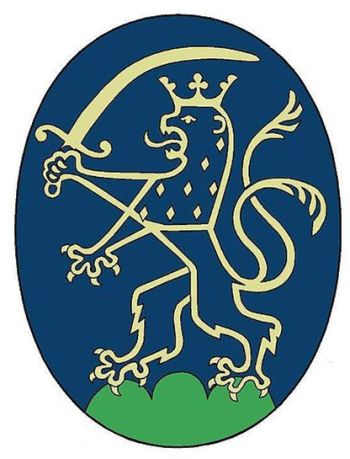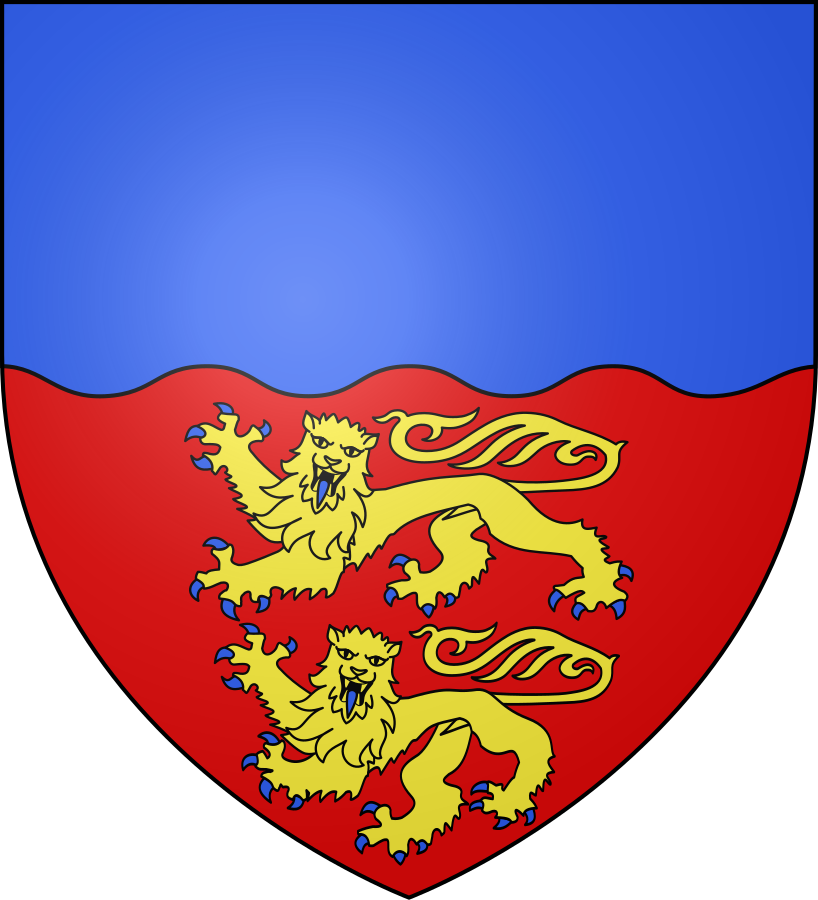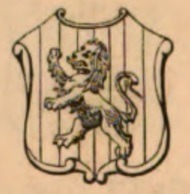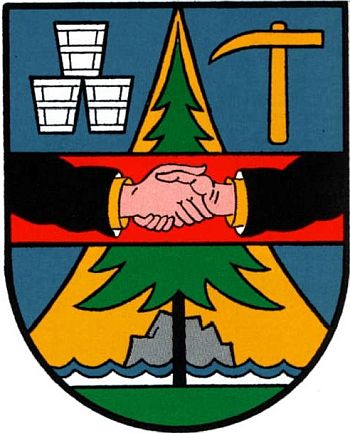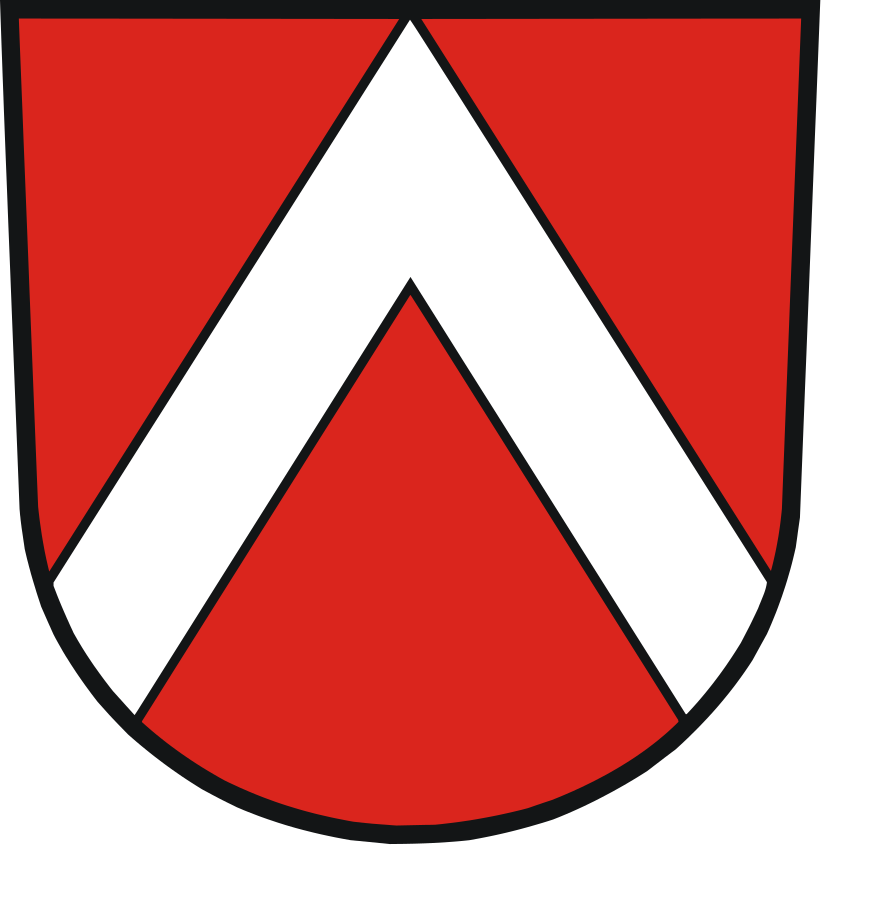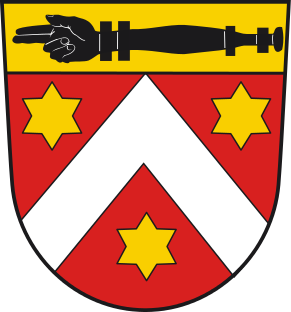
Arms of Neustetten, Germany
In use since 1971
Blazon: Gules a chevron argent between three molets of six points, on a chief or an oath staff (Schwurstab) fesswise sable
Okay, I really like these arms, and not just because they feature a charge I’ve never seen before. The three townships of Nellingsheim, Remmingsheim, and Wolfenhausen were consolidated into the municipality of Neustetten in 1971, and it’s clear that whoever designed the new town’s arms took care to pay homage to its component parts, and also create something visually appealing. I appreciate that kind of thoughtfulness in heraldic design. The Neustetten website also has a nice section on each former township and its arms, so although I don’t usually feature former municipalities, I’m going to make an exception over the next few weeks. Long story short – the chevron comes from Nellingsheim, the chief from Wolfenhausen, and the molets from Remmingsheim (although the number reflects the three former townships). Both the latter towns’ arms featured the Schwurstab, and the tinctures are also relatively consistent.
So… what the hell is a Schwurstab? The literal translation, which I’ve used in the blazon, is “oath staff.” From what I can find, it’s a pretty descriptive name – they seem to have been specially carved staves used in legal proceedings for witnesses to swear on. It seems like they served the same function as a Bible or other sacred text, only more secular.
